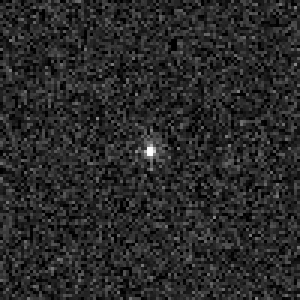| Ananke | |
|---|---|

| |
| Name of satellite | Ananke |
| Planet of origin | Jupiter |
| Discovered by | Seth Barnes Nicholson |
| Date of discovery | September 28, 1951 |
| Location of discovery | Mount Wilson Observatory |
| Surface color | Light red |
| Mass | 2.997 x 10^16 kg |
| Apogee | 16.54 million miles 26.46 million km |
| Perigee | 10.06 million miles 17 million km |
| Apoapsis | 16.54 million miles 26.46 million km |
| Alternate name(s) | Jupiter XII
Adrastea (between 1955 and 1975) |
| Named geographical features | None |
Ananke, also known as Jupiter XII, is a retrograde non-spherical irregular satellite belonging to the outer planet of Jupiter. This satellite was discovered by Seth Barnes Nicholson on September 28, 1951 at the Mount Wilson Observatory. It is a part of the Ananke Group, with it being the largest in said group. The IAU already confirmed that all moons ending in "e" for all retrograde moons, which is the ending letter for all of the names of the satellites in this group.
Group[]
Main article: Ananke Group
It belongs to the Ananke Group, a group of retrograde irregular satellites. The group is named after Ananke, as it is the largest moon of the group. There are a total of twenty-eight satellites in the Ananke Group. Some of the Ananke Group members are listed below.
Formation[]
It is believed that Ananke was a stray asteroid in deep space. Ananke was pulled in by Jupiter's gravitational pull. This theory is proven due to Ananke having a composition matching those of P-type asteroids, which may contain water ice.
Surface[]
The surface of Ananke has a visible spectrum of light red that telescopes in astronomy labs display, yet, it displays an infrared spectrum not visible similar to P-type asteroids, which show signs of water ice, silicates, and carbon.
